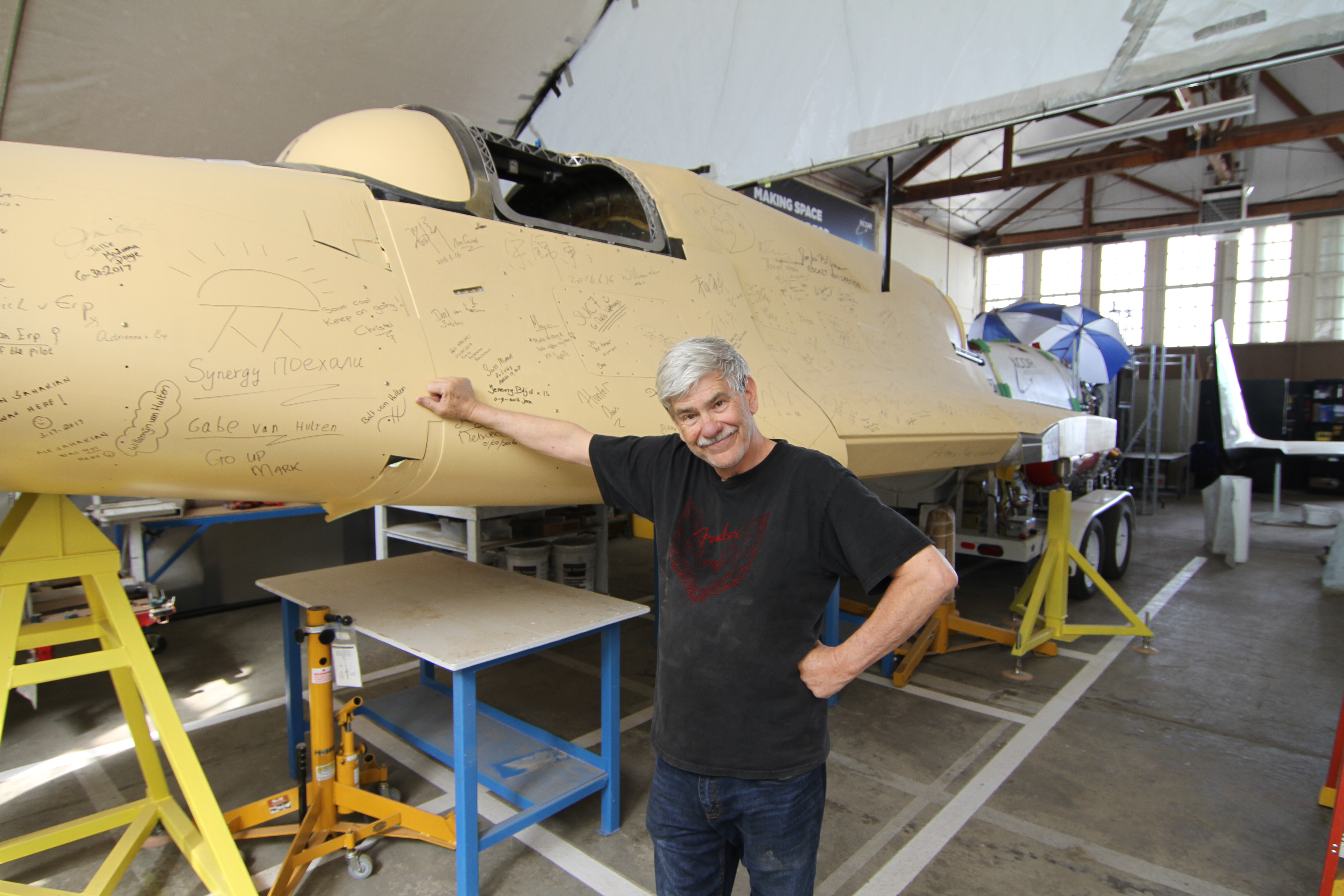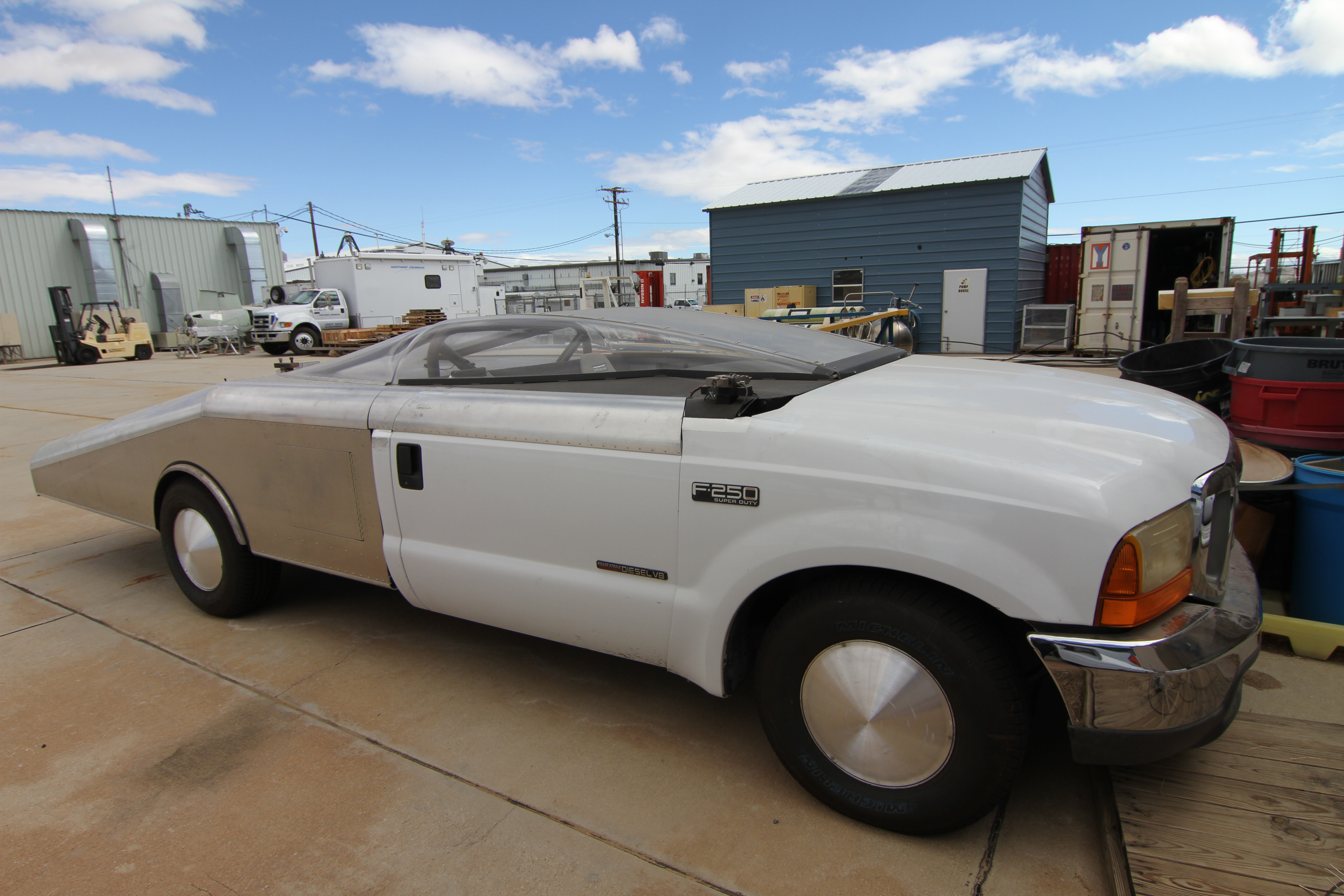Bankrupt Spaceflight Company's Space Plane Assets to Help Young Minds Soar

MOJAVE, Calif. – Before it went bankrupt last year, XCOR Aerospace had ambitious plans to fly tourists to space with the company's fully reusable Lynx suborbital vehicle. But now, the company's assets will be used for a more down-to-Earth purpose: giving high school and college students hands-on experience with rockets and space technology.
A nonprofit organization called Build A Plane purchased XCOR's assets at auction for just under $1.1 million, according to court records. The amount was slightly above the $1 million bid by Space Florida, an agency that supports space in the Sunshine State and that was also one of XCOR's largest creditors.
Build A Plane plans to use the assets for a new school the organization wants to build in Lancaster, California, said the nonprofit's founder, Lyn Freeman. [Ex-Space Plane: Inside the Hangar at Bankrupt XCOR Aerospace (Photos)]
"The idea being that we could get kids — if we had a stellar faculty — that we could get students from all over the country who were to come and learn about aerospace and rocketry specifically," he said. "The cool thing is that this school would be co-located with a functioning aerospace company, so that when they designed rocket components, for example, they could then open the doors and step out into 20,000 square feet [1,858 square meters] of aerospace fabrication equipment and engineers and people that were in the business doing it right then and there."
The partner for the project is Sage Cheshire Aerospace, a Lancaster-based fabrication company that built the Red Bull Stratos capsule that Felix Baumgartner used to set a new parachute jump record in October 2012. The partners have been searching for property on which to build the school and a production facility.
This is Build A Plane's first major foray into aerospace. For the past 15 years, the organization has focused on getting companies to donate airplanes to high schools to give students hands-on experience with building, repairing and refurbishing aircraft, Freeman said. To date, Build A Plane has placed more than 300 aircraft with schools and aviation clubs, according to the group's website.
About a year ago, the group expanded its scope with Build A Rocket at the urging of a donor who insists upon anonymity.
Breaking space news, the latest updates on rocket launches, skywatching events and more!
"A little while back, we were approached by a gentleman who said, 'Gee, you know, would you like to add Build A Rocket under the umbrella of Build A Plane?'" Freeman said. "And, you know, quite honestly, we've always had a fair amount of demand for aerospace-y stuff from kids, and we just had never done anything in that direction. But this offered an amazing chance for us to get our feet wet in aerospace and rocketry." [Meet Lynx: XCOR Aerospace's Winged Space Plane (Gallery)]
Out of those discussions came two projects. In addition to the school, Build A Plane began developing kits with 18-foot-tall (5.5 m) rockets capable of reaching 30,000 feet (9,144 m) that it plans to begin distributing to schools within the next few months.
"And then, suddenly, the XCOR bankruptcy came up, and [the donor] thought it was an excellent opportunity for us to acquire all kinds of things for our bricks-and-mortar school, and at cents on the dollar. So, he gave us the money for us to go out and buy the XCOR assets," Freeman added.
The organization has not figured out what to do with all of XCOR's assets. Freeman and a small group of helpers have spent days at the company's hangar, which is stuffed with equipment, supplies and parts. The building at the Mojave Air and Space Port in California also includes a half-finished Lynx and full-scale model of the two-seat space plane made out of fiberglass.
"It's overwhelming," Freeman said. "It's like 300 percent more stuff than I had imagined. Man, and going through it — sometimes, it spooks me. I can spend an entire day just going through a file cabinet just to make sure we're not throwing away paperwork that would be of some value to someone that's playing with these assets somewhere down the trail. It's just completely crazy. And we've got 30 bazillion different kind of parts that have to be cataloged. We're photographing everything. It's a big project.
"Some of it, I don't think we'll find any use for," he added, though he said XCOR founder Jeff Greason was going to help find uses for the assets. "Sadly, there's a lot of tooling and molds and stuff that like that that are here that are for the Lynx. I can't imagine that we'll find any value in that. I mean, the Lynx will never fly. So, I'm not sure what we're going to do with that stuff. It's sad to see it go to the landfill. And maybe there's schools or museums or something that might use that. I don't know."
Freeman said it made him sad to see XCOR's dreams of spaceflight fall short.
"I've gotten emails from some of the engineers that were here that say, 'What's going to happen to our baby?'" he said. "It is sad. I certainly know what it's like to dedicate almost every second of your life to a project. And I know a lot of these people, that's exactly what they did, and it's sad."
Douglas Messier is managing editor of Parabolicarc.com. Follow him on Twitter@spacecom. Follow us @Spacedotcom, Facebook or Google+. Originally published on Space.com.
Douglas Messier is the managing editor of Parabolicarc.com, a daily online blog founded in 2007 that covers space tourism, space commercialization, human spaceflight and planetary exploration. Douglas earned a journalism degree from Rider University in New Jersey as well as a certificate in interdisciplinary space studies from the International Space University. He also earned a master's degree in science, technology and public policy from George Washington University in Washington, D.C. You can follow Douglas's latest project on Twitter and Parabolicarc.com.

